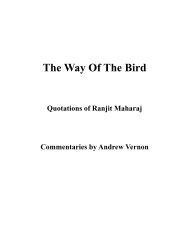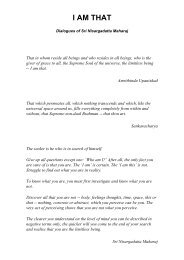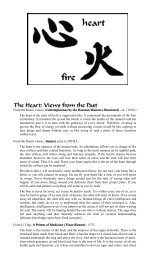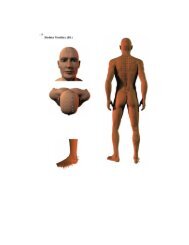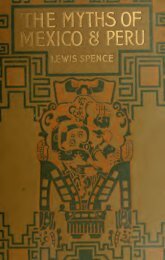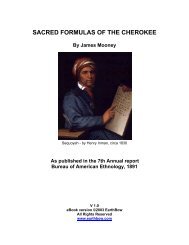You also want an ePaper? Increase the reach of your titles
YUMPU automatically turns print PDFs into web optimized ePapers that Google loves.
A general account of bonding<br />
third into nature, which it diversifies and sustains with its seeds; and fourth<br />
into matter, which it supplies with forms. According to them this beam of<br />
light is clearest in the mind, clear in the soul, obscure in nature and most<br />
obscure in the material substrate of natural things. It is not a bodily mass,<br />
and it has no bulk. Nor can it rotate around a mass and through the whole<br />
of space, for not just large things, but also small ones, are seen to be beautiful.<br />
In the same species, large things are deformed and small things are<br />
beautiful, but the opposite also occurs, and it often happens that beauty is<br />
lost when something remains the same in quantity, and is preserved when<br />
that quantity is changed. The most beautiful baby or child is pleasing but<br />
does not bind until he is an adolescent of a certain age. Then he has some<br />
size, and this is true even if his form and figure and complexion have not<br />
changed at all. From this we conclude that social types of bonding require<br />
a degree of size on which the form and the power of the bond depends. It<br />
refers, I think, to gestures, words, clothing, habits, sense of humour, and<br />
the other signs of human feelings.<br />
2. The origin of a bond. Some Platonists define a bond as arising from a certain<br />
proportionality of parts accompanied by a certain pleasantness of<br />
colouring. But to those who consider the matter more fully, it is at least as<br />
clear that it is not just composite things and things consisting of parts that<br />
bind, but that colour alone and sound alone also bind. Furthermore, nothing<br />
slips away and ages faster than beauty, and nothing changes more slowly<br />
than the form and figure which shine forth from the composition of parts.<br />
Hence, it seems that the bond of beauty must be sought elsewhere than in<br />
the figure and in the proportionality of parts. Indeed, sometimes love<br />
passes away after the flowering of the object loved, but the same beauty and<br />
figure still remain. As a result, the nature of a bond consists chiefly in a certain<br />
mutual orientation between a captor and a captive. Indeed, it sometimes<br />
happens that even though we have no grounds to complain reasonably<br />
about a girl’s beauty, or in a social setting to criticize someone’s<br />
conversation, speech, habits or actions in general, still they do not please<br />
us. On the other hand, something, or even many things, may displease us<br />
in someone, yet we still love that person. And, indeed, it would be rather<br />
stupid to identify colour as a bond without distinguishing between colour<br />
and the things associated with colour. For does colour in itself bind when<br />
a brighter colour is displeasing and rejected by an old man, while a duller<br />
colour binds and captures a young man? And also if, in a social setting, an<br />
166







